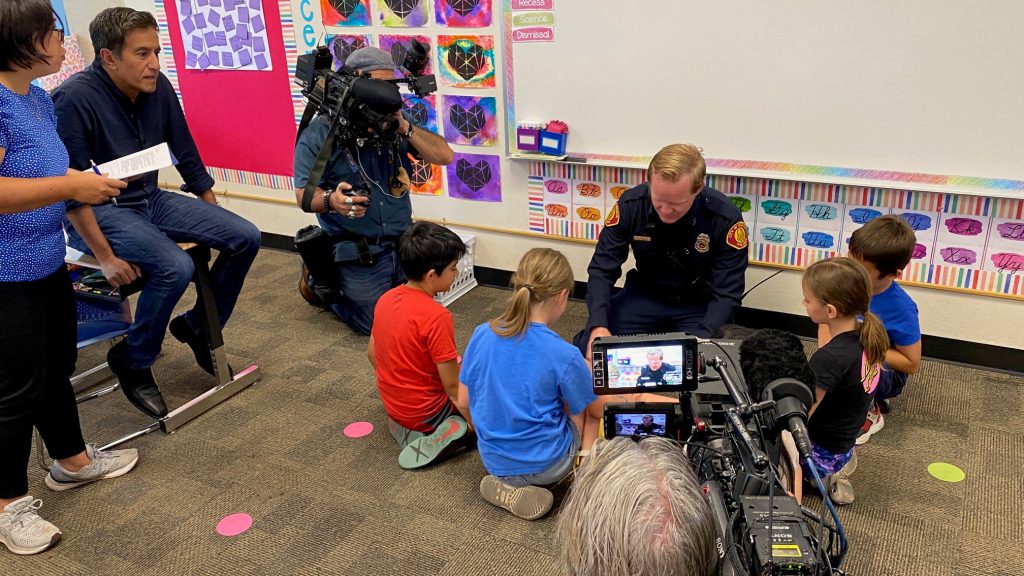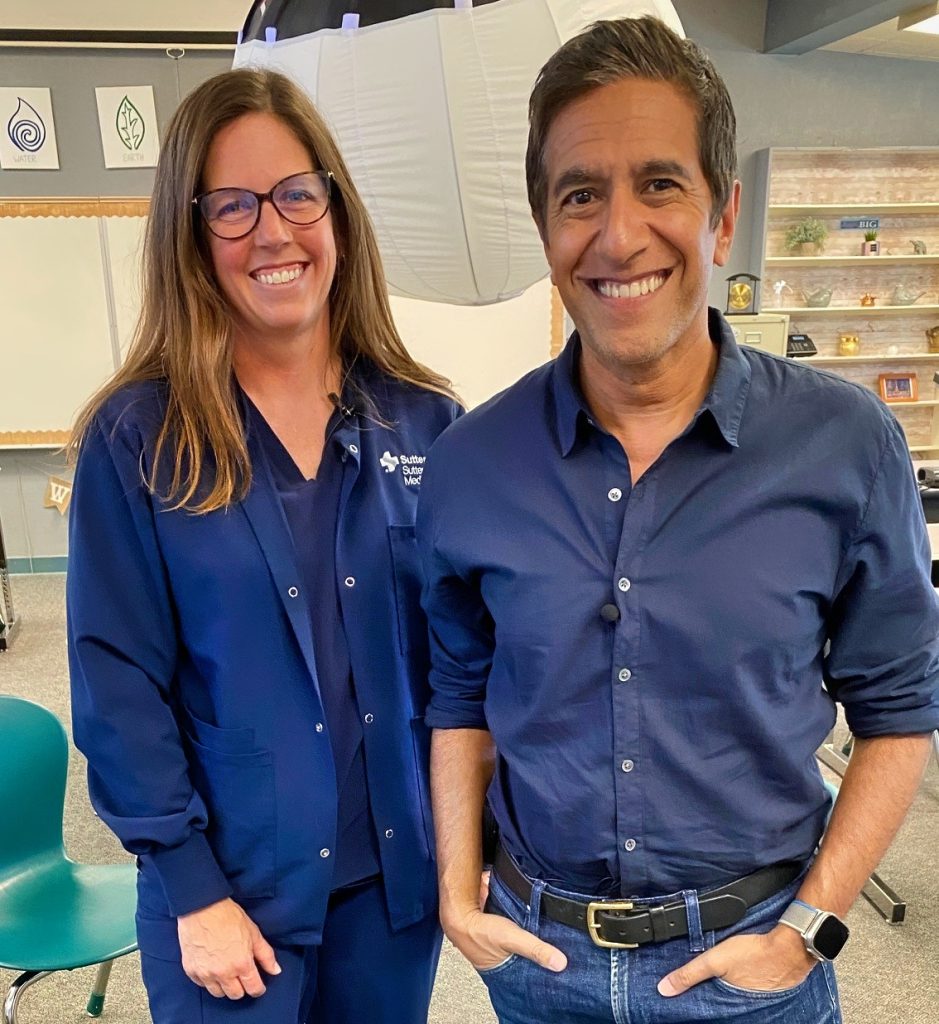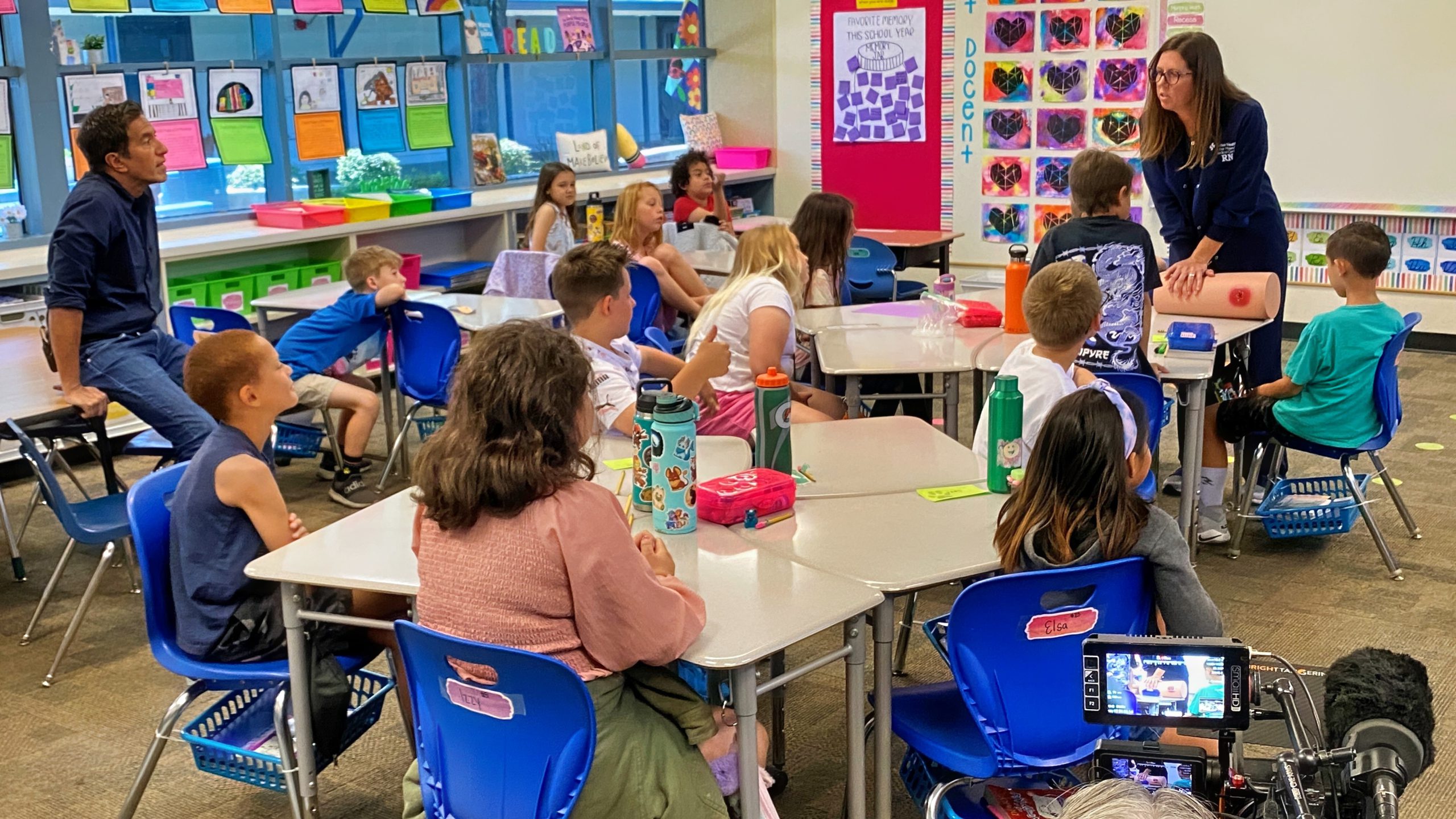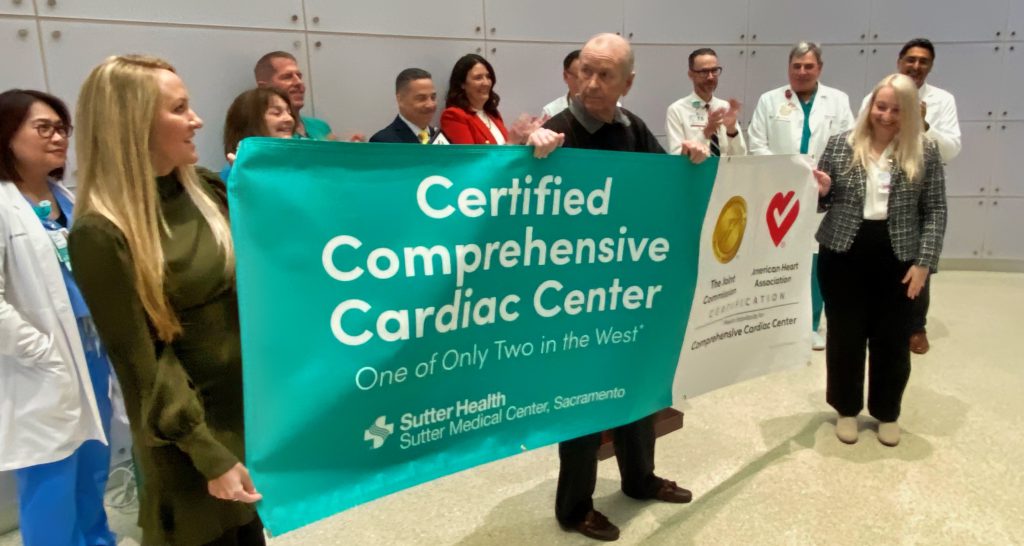Dr. Sanjay Gupta, CNN’s chief medical correspondent, left, listens intently as Sutter Roseville Medical Center trauma nurse and educator Kate Carleton, right, teaches a Rocklin Unified School District third-grade class how to control a bleed.
Kate Carleton saw a documentary on the 2012 Sandy Hook Elementary School shooting and wondered what her young children would do if that happened at their school.
“I wanted my kids and others if they were in a situation – it may be an active-shooter situation, or it may be a loved one at home who got hurt – that they could help instead of just standing there, and they could have some kind of power to affect the situation in a positive way,” the Sutter Roseville Medical Center trauma nurse and educator said.

Third graders are being filmed as a Rocklin city fire captain gives them hands-on training to Stop the Bleed. At left is CNN producer Nadia Kounang and CNN Chief Medical Correspondent Sanjay Gupta.
That was the beginning of a local school program to teach children as young as kindergarten age how to “stop the bleed” and potentially save someone’s life.
The Bleeding Control for Kids program has been so successful that, in the six years since its inception, hundreds of Placer County schoolchildren have been taught how to recognize a life-threatening, bleeding wound, and then how to stop that bleed. Now the curriculum has caught the eye of CNN Chief Medical Correspondent Dr. Sanjay Gupta, who is preparing a story to run on the show “Anderson Cooper 360” and other news programs.
On May 23, Dr. Gupta was at Rocklin Elementary School, where Carleton, Sutter Roseville colleagues and Rocklin Fire and EMS partners teamed up to teach the curriculum to classes of third and sixth graders.
They taught children how to stop the bleed if someone got cut from a piece of glass or other similar injury, but never did they mention shooting incidents. Part of the instruction is hands-on (or should we say knee-on) by using a rubber, life-like “leg” with an open wound in it, and having the kids practice stuffing a towel into it and then applying pressure with their knee to control the bleeding.
The curriculum isn’t to scare the children, Carleton says, but rather empower them with tools in case they come across any type of bleeding injury.
“We treat it like hands-only CPR” and other life-saving courses, Carleton said. “We are taking the fear factor out of it.”

“You are a superstar,” Dr. Sanjay Gupta, right, said of trauma nurse and educator Kate Carleton, left
Dr. Gupta was very impressed. “You’re a superstar,” Dr. Gupta told Carleton in a post-class interview. “I was fully immersed in it. I was thinking, ‘What if there was an active shooter?’ And I could imagine one of these little kids getting on their hands and knees and stopping the bleed, saving a life. It was both awe-inspiring and at the same time horrifying.”
Carleton works with school administrators and teachers to tailor the curriculum to each age group, and she continues to ask for feedback from teachers, parents, students and administrators. This, she says, ensures that the program is taught appropriately while at the same time giving the children the necessary tools just in case there is a shooting or any type of accident or injury when they need to act.
“The focus is how to save someone’s life,” she says. “We don’t want to lose sight of what this program is all about.”
Watch for Dr. Gupta’s story to air in June on CNN and possibly on your local news station. For more about the Bleeding Control for Kids program, see this poster that was created by the Sutter Roseville trauma team from 2018.





